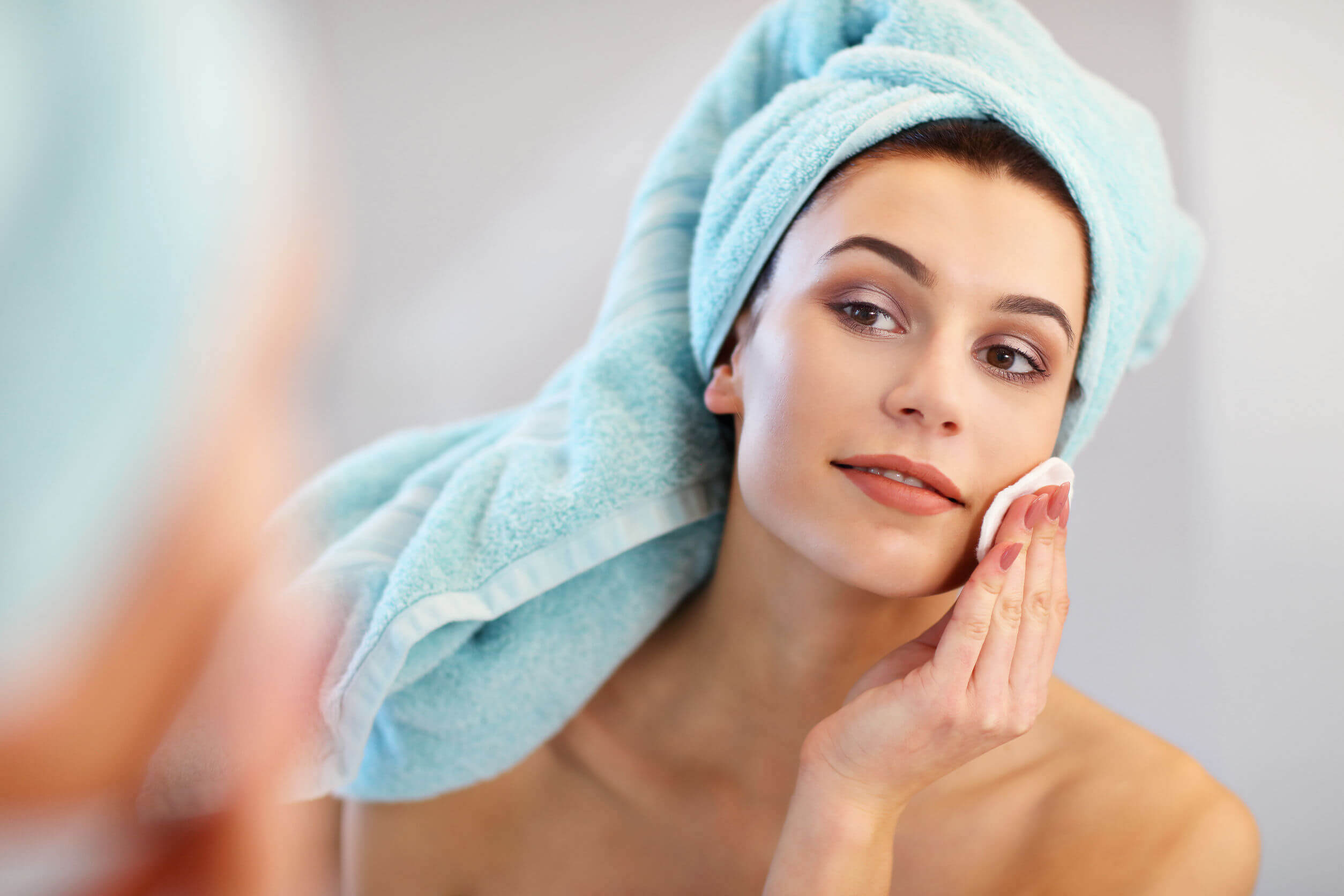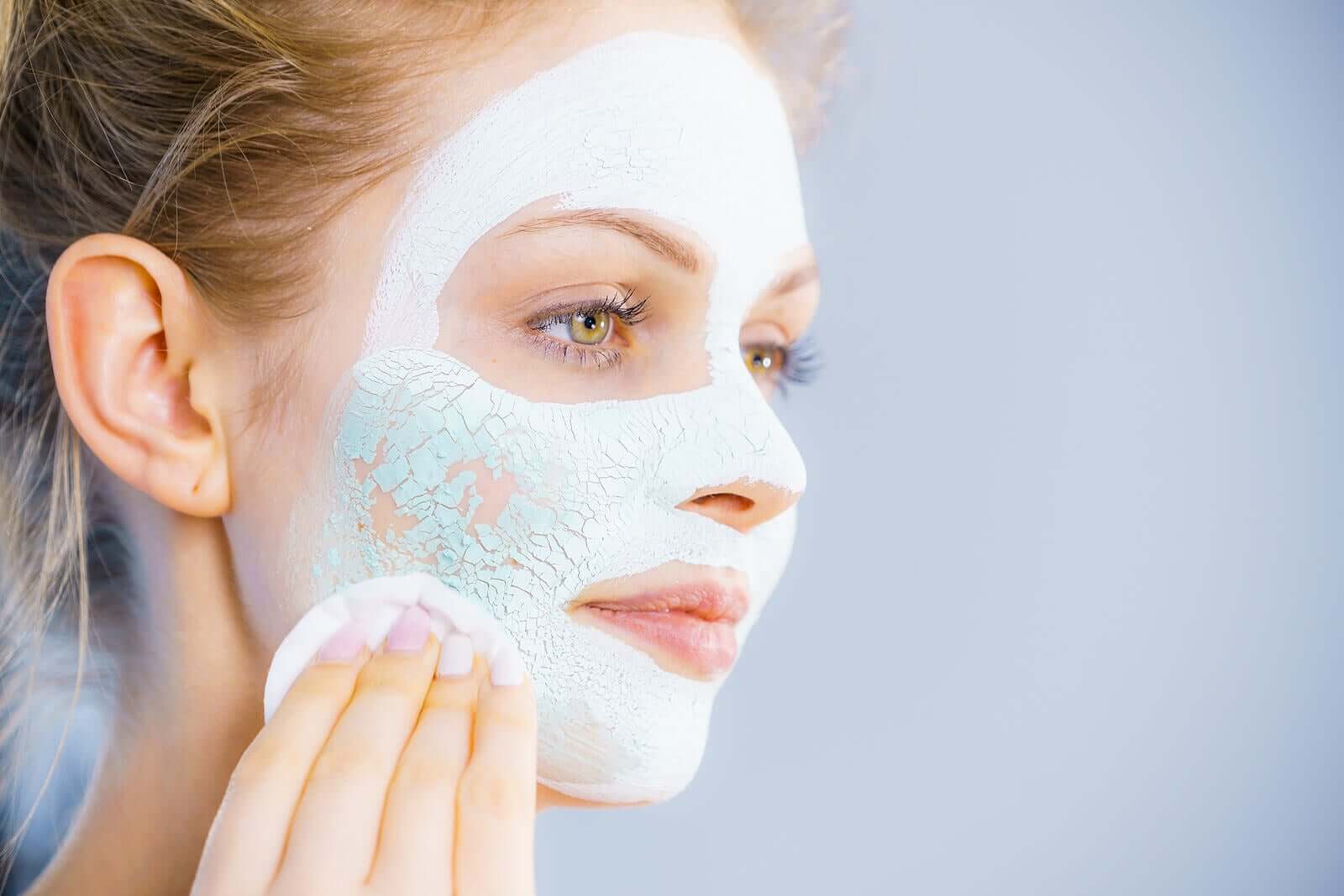Oily Skin During Pregnancy: Advice and Care


Written and verified by the dermatologist Maria del Carmen Hernandez
Oily skin is one of the many physiological changes that a woman’s body undergoes during pregnancy. The treatment of this condition is aesthetic, in most cases. The good news is that it usually resolves spontaneously after birth.
Do you want to know more about what it’s about? Then don’t miss all the information that we’ve prepared for you.
The causes of oily skin during pregnancy
During pregnancy, a wide variety of immunological, hormonal, and metabolic alterations occur in the woman’s body.
Some hormones increase their levels to promote the development of the baby and, as a consequence, they stimulate the glands of the body to produce more secretions.
Among them, the sebaceous glands of the skin are responsible for producing sebum (fat) as a protection mechanism. Although they’re located in the different parts of the body, they’re more abundant at the level of the upper chest, the face, the area behind the ears, and the back.
Among the most frequent clinical manifestations of this phenomenon, the following stand out:
- Excessive shininess
- Enlarged pores
- Acne
- Alteration of the hydrolipidic layer that covers the skin
- There may even be palpable roughness and bumpiness in different areas of the body
Also read: 9 Ways Your Body Changes After Pregnancy
Caring for oily skin during pregnancy
Implementing a correct care routine contributes to keeping the skin healthy and functional. In turn, it prevents the development of impurities, infections, or unwanted injuries.
Proper cleaning is the most basic step to prevent oily skin during pregnancy

Ideally, you should maintain a care and hygiene routine in the morning and at night, before going to bed. This helps to remove sebum and the remains of dead cells so that the skin regenerates naturally.
Skin cleansing in pregnancy should be involve cleansing gels that don’t contain alcohol or perfumes. Also, you should avoid abrasive or chemical-containing products.
An important aspect to consider is that washing your face more often than directed can be counterproductive, as it further stimulates the production of sebum.
Balanced nutrition and hydration
Eating habits are closely related to some dermatological conditions. Therefore, you should increase the intake of fruits and vegetables and reduce the amount of sugar and saturated fat in the diet. In addition to the benefits for your body, they contribute to maintaining healthy skin.
Sufficient hydration ensures the proper functioning of the digestive system and other organs of the body. It also contributes to the elimination of toxins through the urine and prevents them from being eliminated through the pores of the skin.
Use of toning lotions
After cleansing, the skin is prepared for the application of tonic solutions with astringent elements (such as salicylic acid) to reduce excess oiliness.
Another recommended substance is glycolic acid, which gives greater luminosity while improving the tone and texture of the skin.
Lactic acid is also an excellent option, and it can even be used in months when UV exposure is high. The same can’t be said for retinoic acid, which must be used under certain precautions.
You may be interested: Quick Makeup Tips and Steps for Tired Moms
Moisturizing and nourishing the skin
Even when the skin becomes oily, moisturizing is necessary. For this reason, it’s best to choose creams that don’t contain oils. And, if they do, they should be glycerin or hyaluronic acid.
According to a study published in The Journal of Clinical and Aesthetic Dermatology, aloe vera is a very good option for treating oily skin. The product used must contain at least 10% aloe vera in order to be considered an effective moisturizer.
It’s important to note that this substance can cause allergic reactions in some people, so it’s best to test a small amount on the forearm before using it on the whole body.
Face masks

Healing cosmetic clay-based face masks have the ability to absorb oil from the skin and are used in different conditions.
French green clay is one of the most popular for the treatment of acne and oily skin. Even face masks that you can remove with water are gentler than those that peel off.
Choosing the right products
Currently, there’s a wide variety of oil-free products that are recommended for this type of skin. It’s best to opt for non-comedogenic cosmetics that are light and have a high concentration of water. This includes hygiene products as well as makeup products.
Oily skin and quality of life during pregnancy
Oily skin is one of the most frequent dermatological concerns of pregnant women. Therefore, the best preventive measure is a routine of constant and functional care.
The use of home remedies for oily skin isn’t recommended during pregnancy due to the potential health risks for the mother and baby. The best option is to go to a dermatologist to start an adequate, safe, and effective treatment.
Oily skin is one of the many physiological changes that a woman’s body undergoes during pregnancy. The treatment of this condition is aesthetic, in most cases. The good news is that it usually resolves spontaneously after birth.
Do you want to know more about what it’s about? Then don’t miss all the information that we’ve prepared for you.
The causes of oily skin during pregnancy
During pregnancy, a wide variety of immunological, hormonal, and metabolic alterations occur in the woman’s body.
Some hormones increase their levels to promote the development of the baby and, as a consequence, they stimulate the glands of the body to produce more secretions.
Among them, the sebaceous glands of the skin are responsible for producing sebum (fat) as a protection mechanism. Although they’re located in the different parts of the body, they’re more abundant at the level of the upper chest, the face, the area behind the ears, and the back.
Among the most frequent clinical manifestations of this phenomenon, the following stand out:
- Excessive shininess
- Enlarged pores
- Acne
- Alteration of the hydrolipidic layer that covers the skin
- There may even be palpable roughness and bumpiness in different areas of the body
Also read: 9 Ways Your Body Changes After Pregnancy
Caring for oily skin during pregnancy
Implementing a correct care routine contributes to keeping the skin healthy and functional. In turn, it prevents the development of impurities, infections, or unwanted injuries.
Proper cleaning is the most basic step to prevent oily skin during pregnancy

Ideally, you should maintain a care and hygiene routine in the morning and at night, before going to bed. This helps to remove sebum and the remains of dead cells so that the skin regenerates naturally.
Skin cleansing in pregnancy should be involve cleansing gels that don’t contain alcohol or perfumes. Also, you should avoid abrasive or chemical-containing products.
An important aspect to consider is that washing your face more often than directed can be counterproductive, as it further stimulates the production of sebum.
Balanced nutrition and hydration
Eating habits are closely related to some dermatological conditions. Therefore, you should increase the intake of fruits and vegetables and reduce the amount of sugar and saturated fat in the diet. In addition to the benefits for your body, they contribute to maintaining healthy skin.
Sufficient hydration ensures the proper functioning of the digestive system and other organs of the body. It also contributes to the elimination of toxins through the urine and prevents them from being eliminated through the pores of the skin.
Use of toning lotions
After cleansing, the skin is prepared for the application of tonic solutions with astringent elements (such as salicylic acid) to reduce excess oiliness.
Another recommended substance is glycolic acid, which gives greater luminosity while improving the tone and texture of the skin.
Lactic acid is also an excellent option, and it can even be used in months when UV exposure is high. The same can’t be said for retinoic acid, which must be used under certain precautions.
You may be interested: Quick Makeup Tips and Steps for Tired Moms
Moisturizing and nourishing the skin
Even when the skin becomes oily, moisturizing is necessary. For this reason, it’s best to choose creams that don’t contain oils. And, if they do, they should be glycerin or hyaluronic acid.
According to a study published in The Journal of Clinical and Aesthetic Dermatology, aloe vera is a very good option for treating oily skin. The product used must contain at least 10% aloe vera in order to be considered an effective moisturizer.
It’s important to note that this substance can cause allergic reactions in some people, so it’s best to test a small amount on the forearm before using it on the whole body.
Face masks

Healing cosmetic clay-based face masks have the ability to absorb oil from the skin and are used in different conditions.
French green clay is one of the most popular for the treatment of acne and oily skin. Even face masks that you can remove with water are gentler than those that peel off.
Choosing the right products
Currently, there’s a wide variety of oil-free products that are recommended for this type of skin. It’s best to opt for non-comedogenic cosmetics that are light and have a high concentration of water. This includes hygiene products as well as makeup products.
Oily skin and quality of life during pregnancy
Oily skin is one of the most frequent dermatological concerns of pregnant women. Therefore, the best preventive measure is a routine of constant and functional care.
The use of home remedies for oily skin isn’t recommended during pregnancy due to the potential health risks for the mother and baby. The best option is to go to a dermatologist to start an adequate, safe, and effective treatment.
All cited sources were thoroughly reviewed by our team to ensure their quality, reliability, currency, and validity. The bibliography of this article was considered reliable and of academic or scientific accuracy.
- Chularojanamontri, L., Tuchinda, P., Kulthanan, K., & Pongparit, K. (2014) Moisturizers for Acne: What are their Constituents?. The Journal of clinical and aesthetic dermatology, 7(5), 36–44.
- Sakuma TH, Maibach HI. (2012) Oily skin: an overview. Skin Pharmacol Physiol, 25(5), 227-35. doi: 10.1159/000338978. Epub 2012 Jun 20. PMID: 22722766.
- Bozzo P, Chua-Gocheco A, Einarson A. (2011) Safety of skin care products during pregnancy. Can Fam Physician. Jun;57(6):665-7. PMID: 21673209; PMCID: PMC3114665.
This text is provided for informational purposes only and does not replace consultation with a professional. If in doubt, consult your specialist.








